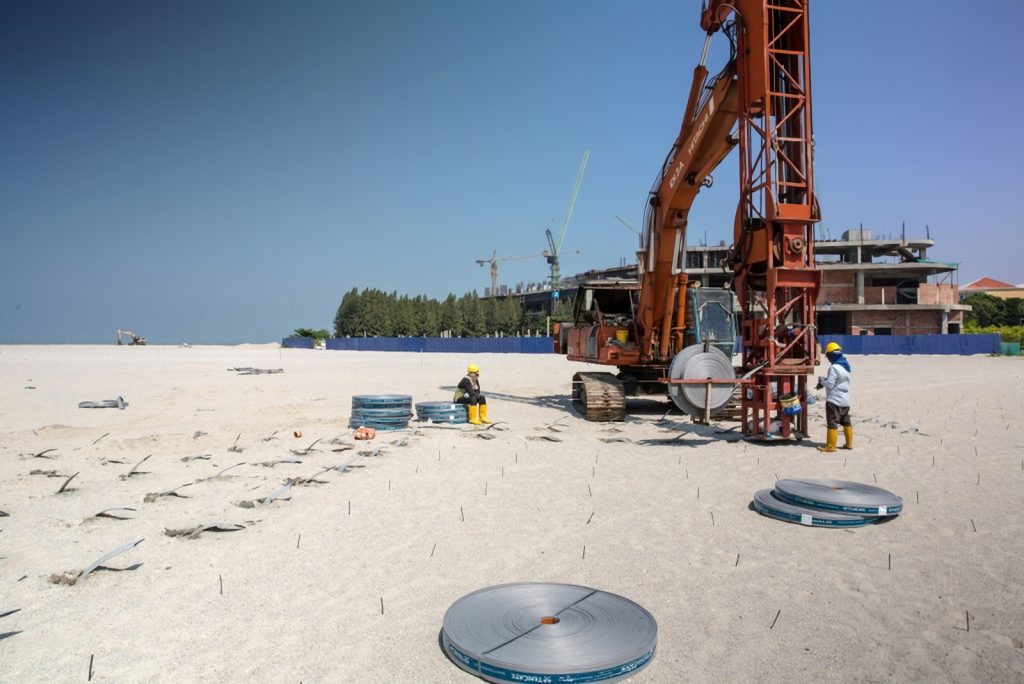
Various techniques and principles are employed during construction, and ground improvement is one of them.
The ground improvement technique is used when the behaviour of the underlying soil and/or the fill mass does not meet the required design criteria.
This technique is carried out at any time and any location once construction is completed. The purpose of this post is to introduce five common ground improvement techniques for your engineering projects.
The following are ground improvement techniques:
Prefabricated vertical drains are prefabricated geotextile filter-wrapped plastic strips with molded channels.
Also known as band drains or Wick Drains, prefabricated vertical drains serve as drainage paths to take pore water out of soft compressible soils that consolidate faster under a constant surcharge load.
Benefits
Common Uses
Dynamic compaction is a ground improvement technique that involves the controlled impact of a crane hoisted weight, (usually around 10-30 tonnes), falling in a pre-determined grid pattern. DC aims to improve loose, granular soils and fills.
Benefits
Common uses
Vibro compaction is an old ground improvement method that uses a downhole vibrator to densify clean, cohesionless granular soils.
Benefits
Common uses
Deep soil mixing involves two methods: wet and dry method.
The deep soil mixing wet method improves the characteristics of weak soils by mechanically mixing them with cementitious binder slurry.
Benefits
Common uses
The deep soil mixing dry method improves peats, soft, high moisture clays, and other weak soils, by mechanically mixing them with the dry cementitious binder.
Benefits
Common uses
Rigid inclusion is a ground improvement technique that uses high-deformation modulus columns constructed through compressible soils to increase bearing capacity and reduce settlement.
Benefits
Common uses
Ground improvement plays a vital role in ensuring that the soil and subsoil of a land reclamation project are safe and secure for construction purposes.
Prefabricated vertical drain contractors use this technique because it is flexible and durable, sufficient enough to bear the capacity of any foundation irrespective of the slopes.
As part of the growing field of Geosynthetics Malaysia, GSSB continues to lead through innovation, engineering excellence, and a deep understanding of local infrastructure needs. Our team is driven by the vision to deliver quality solutions that last.
Learn more about who we are and what drives us.
Copyright © Gateway Structure Sdn Bhd (199401025111). All Right Reserved.